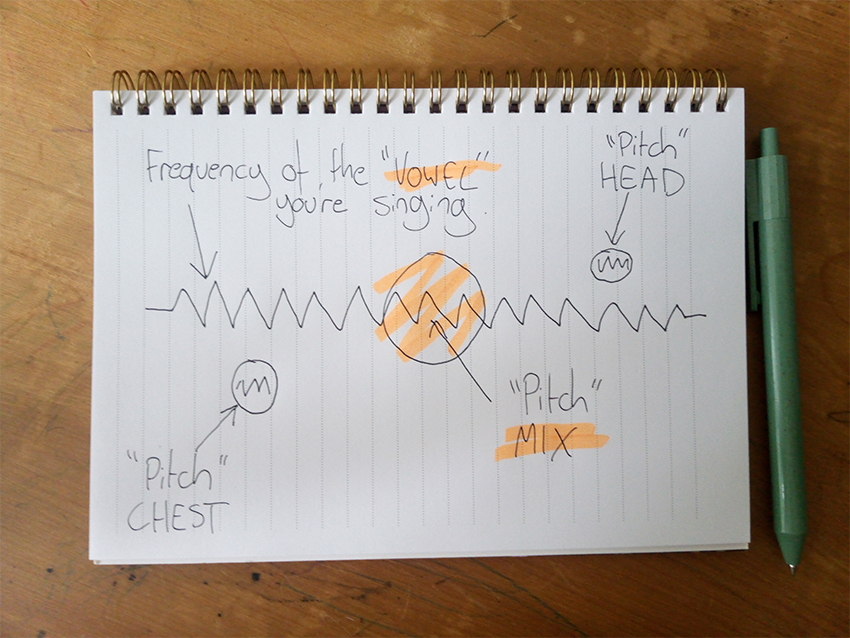Vocal Study
Paul Rodgers (Free, Bad Company)
Vowels, Tonal Intent, CT muscle
I've always marvelled that every second Classic Rock style magazine features Axl Rose or Led Zeppelin on the cover, or maybe ACDC if you're lucky - and Paul Rodgers is almost a "if you know, you know" name to the general public.
It's funny, because all these singers absolutely REVERE Paul Rodgers as a singer.
Lead singer for Bad Company and Free, two of my favourite bands - Paul Rodgers' vocals continue to bring singers undone time and again. I mean, it doesn't really sound like vocal pyrotechnics, right? There's no screeching or squealing like the two aforementioned darlings of Classic Rock style magazines - the range isn't totally crazy (although there's some solid C5s and D5s in the later Bad Company material), and it's not super aggressive or stylistic either;
So why the obsession with this guys voice?
Let me show you how I'm approaching this style and we'll break it down into vowels and advice afterwards;
So, back to the obsession with this guy; well for starters, it's absolutely impossible to sing like the guy - I'm serious.
I'll take Cornell and Staley any day for something I can really make a good go of, maybe Peter Steele, maybe Peter Murphy too - but Paul Rodgers is just something special.
You see, the lack of vocal pyrotechnics is really the secret here - he's such a spectacular singer that he doesn't NEED any of that stuff.
Great melody, great phrasing, beautiful runs, warm tone - if that's what you're looking for outside of just a crazy range like you might have seen in some of my other tutorials, Paul Rodgers is your new secret weapon as a vocal study.
Now, there might not be any CRAZY notes in the cover above, but it's clear there's a dozen moving parts to actually sing like this.
For starters, it actually took me a little bit to work out exactly what vowels from my Formant Activation System I really should be using here - there's some challenging words and interesting phrases that just 'sit' differently to something right on the beat like Alice in Chains or Soundgarden.
Now, the challenging thing here is that Paul Rodgers sings every single vowel - he's not shifting EE sounds into EH like many rock singers (personally, I'm not a fan of ham fisting the vowels like that - but it's unfortunately pretty common), or avoiding OO sounds; but these are often featured in Paul Rodger's singing, almost like a badge of pride.
Hear how I'm singing the word "love" on the phrase "you I love" into that second verse?
You might think that's some kind of UH or AH vowel, right?
It's actually OE - Paul Rodgers' favourite vowel.
Now, being a FRONT vowel, this actually modifies as EH, almost like the word "left"
Think about an old English lady "oh really!" that "oh" is almost an EH-w, right? Go horizontal in the back of the mouth and don't open the mouth TOO much that you're shifting into a different vowel.
Same thing as the challenging line "marry me today" further on in the song - the vowel for "marry" is obviously AA like the first syllable of the word "lateral", right?
Absolutely - but, that sound is absolutely IMPOSSIBLE to sing at this range, right?
That's because the frequency of this vowel, and the frequency of this pitch/register simply don't match well enough, so the vocal folds and larynx really have to contort and strain to create two polar tones.

Paul Rodgers is ultimately a MASTER of what most people called 'mixed voice'
In fact, at 75+ years old he's STILL the master of classic rock singing - still incredible, hasn't lost one millimeter of range, and the tone is as smoothe as butter as it ever has been.
And it's because he's doing exactly what I've illustrated in the diagram above; matching the formants of his vowel to the pitch AND balancing out the mechanism so that there's never too much weight, but the sound is still full and rich.
Now, when most people talk about 'mix' voice - they're using monkey sounds or funny exercises to try and jumpstart this process.
But as you know, involuntary vocal innervation is actually a case-by-case basis.
So, if you're not a "natural" by default, those wacky sounds will do absolutely squat for your voice - and you'll be as puzzled as most people when they first try to sing what sounds like a pretty easy Free or Bad Company song - only to come crashing down on the second verse for some unknown reason.
The key here is to the mechanism functioning properly in an initial sense - and this starts with the right innervation of the CT muscle; something Paul Rodgers mastered at a young age (check out Tons of Sobs when he was all of 17 years old... it's incredible!!)
Secondly to this, you need to match your vowel to the register you're singing in at the same time.
It's a super easy process, and this is where I suggest you get started;
With the CT booster training course
